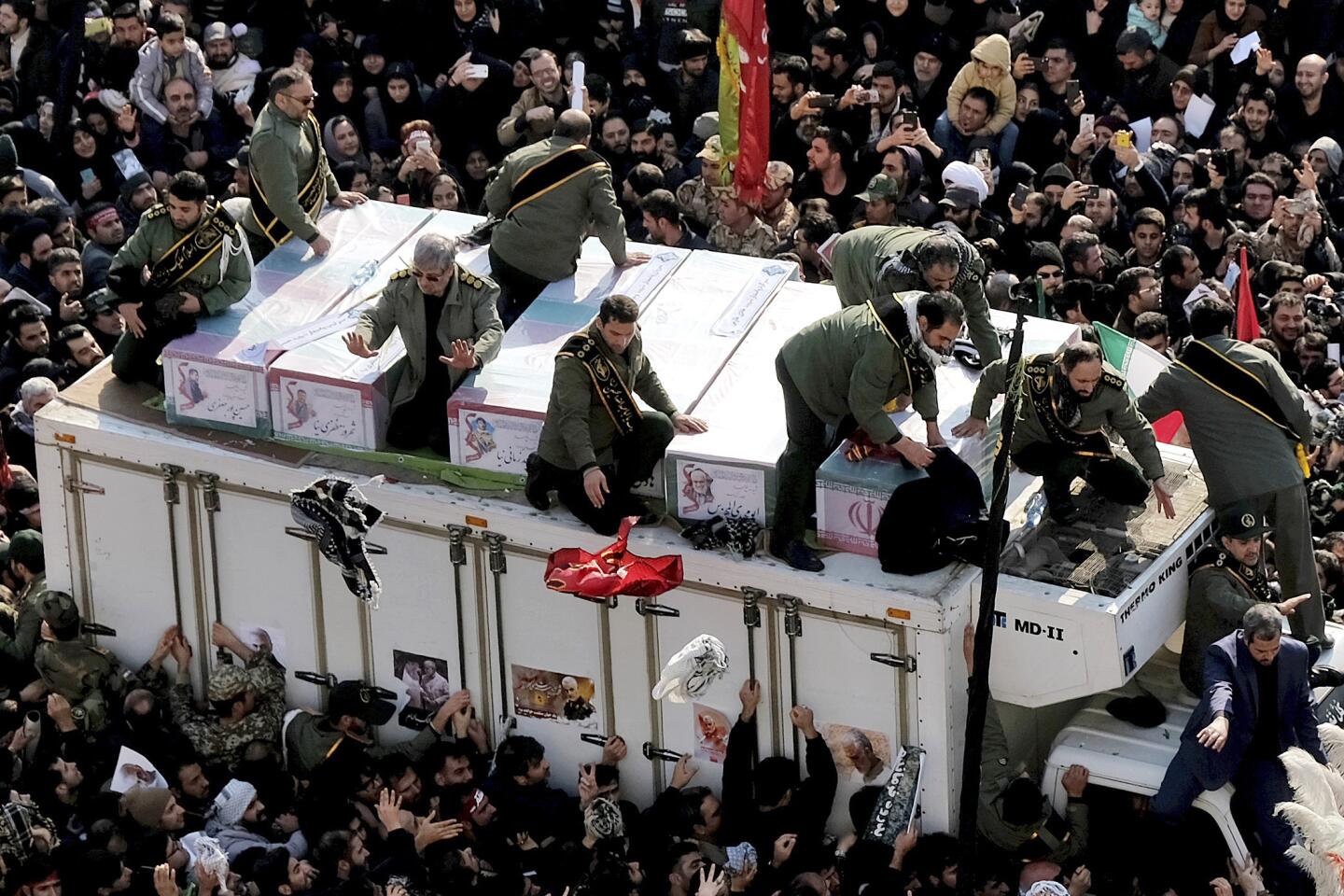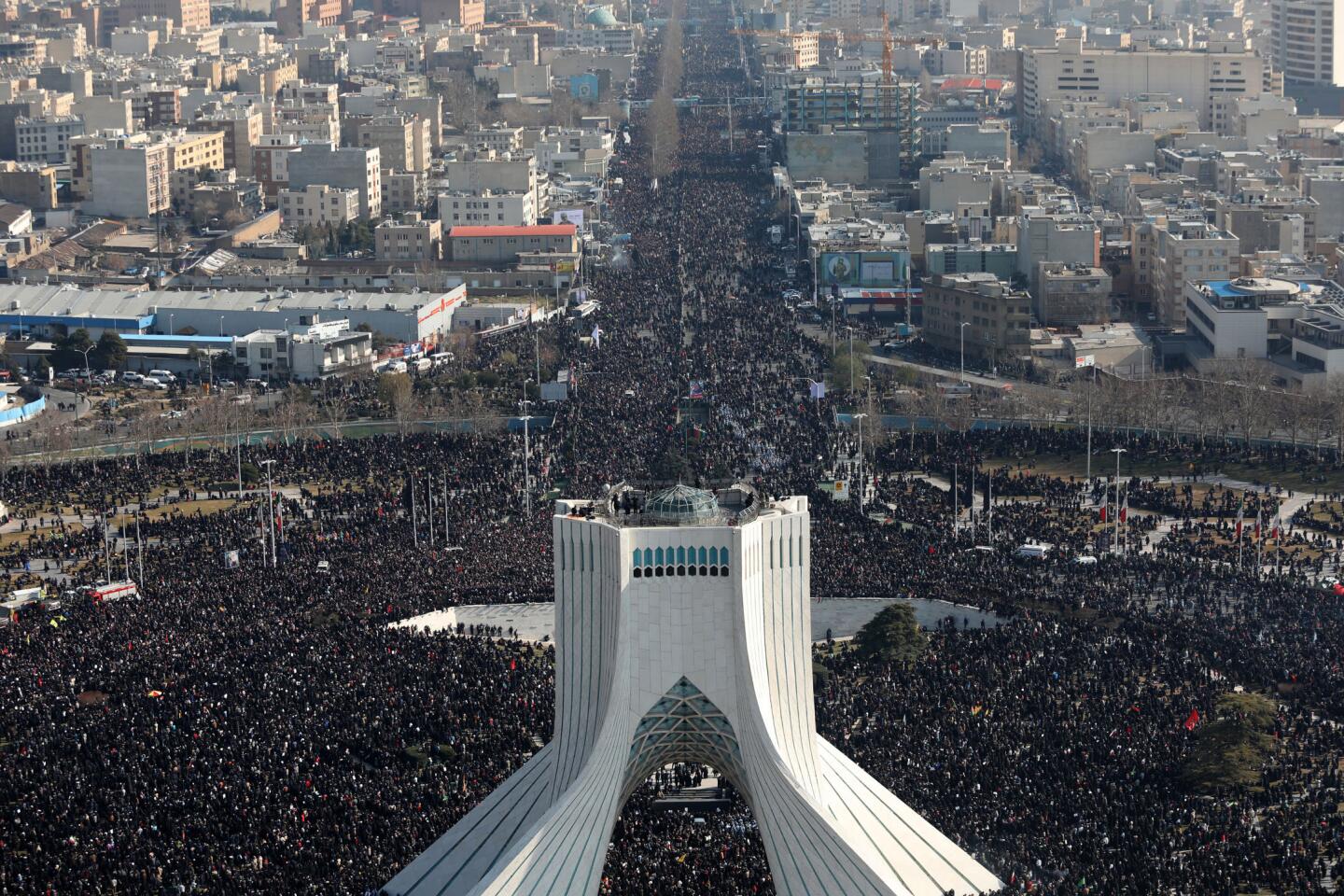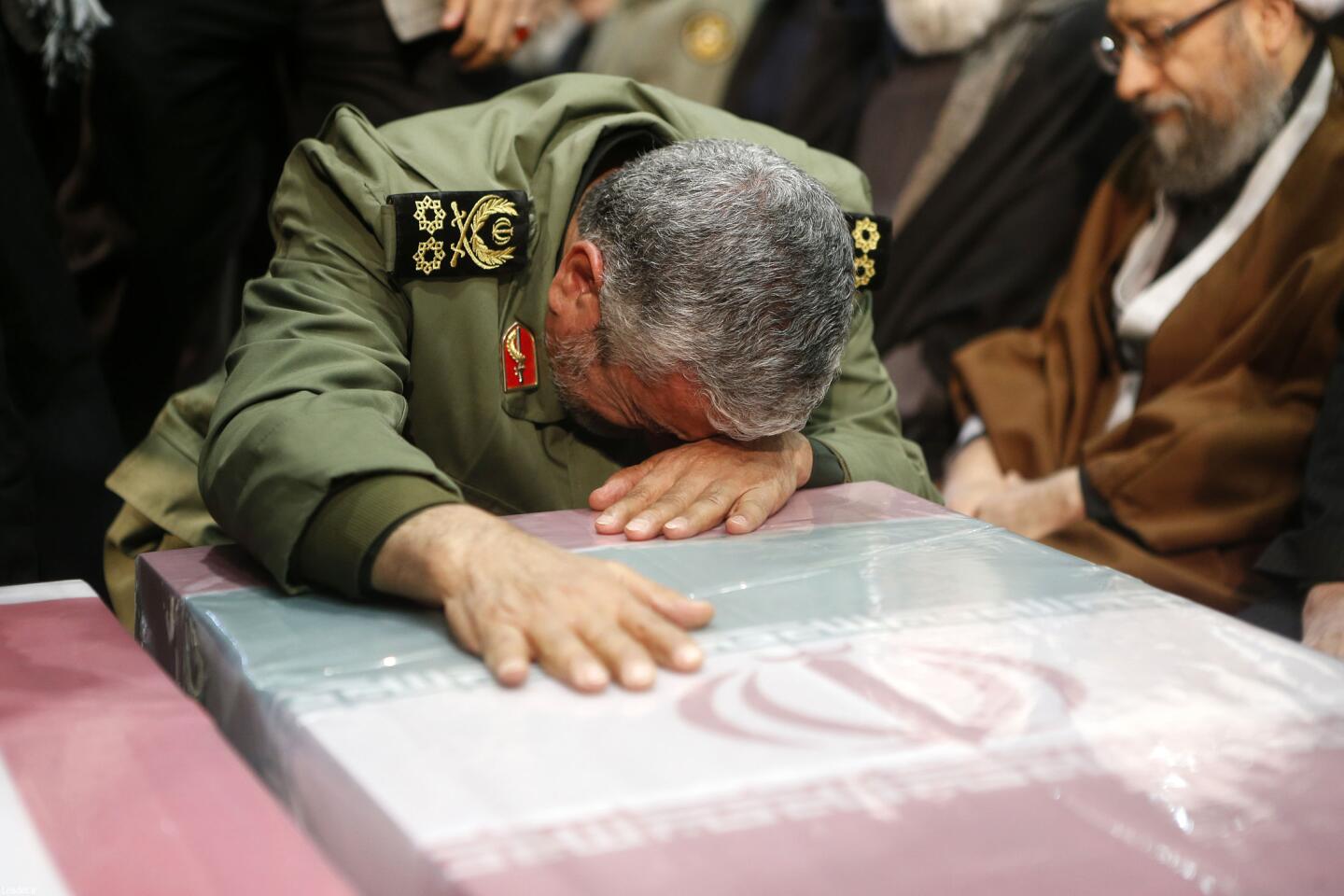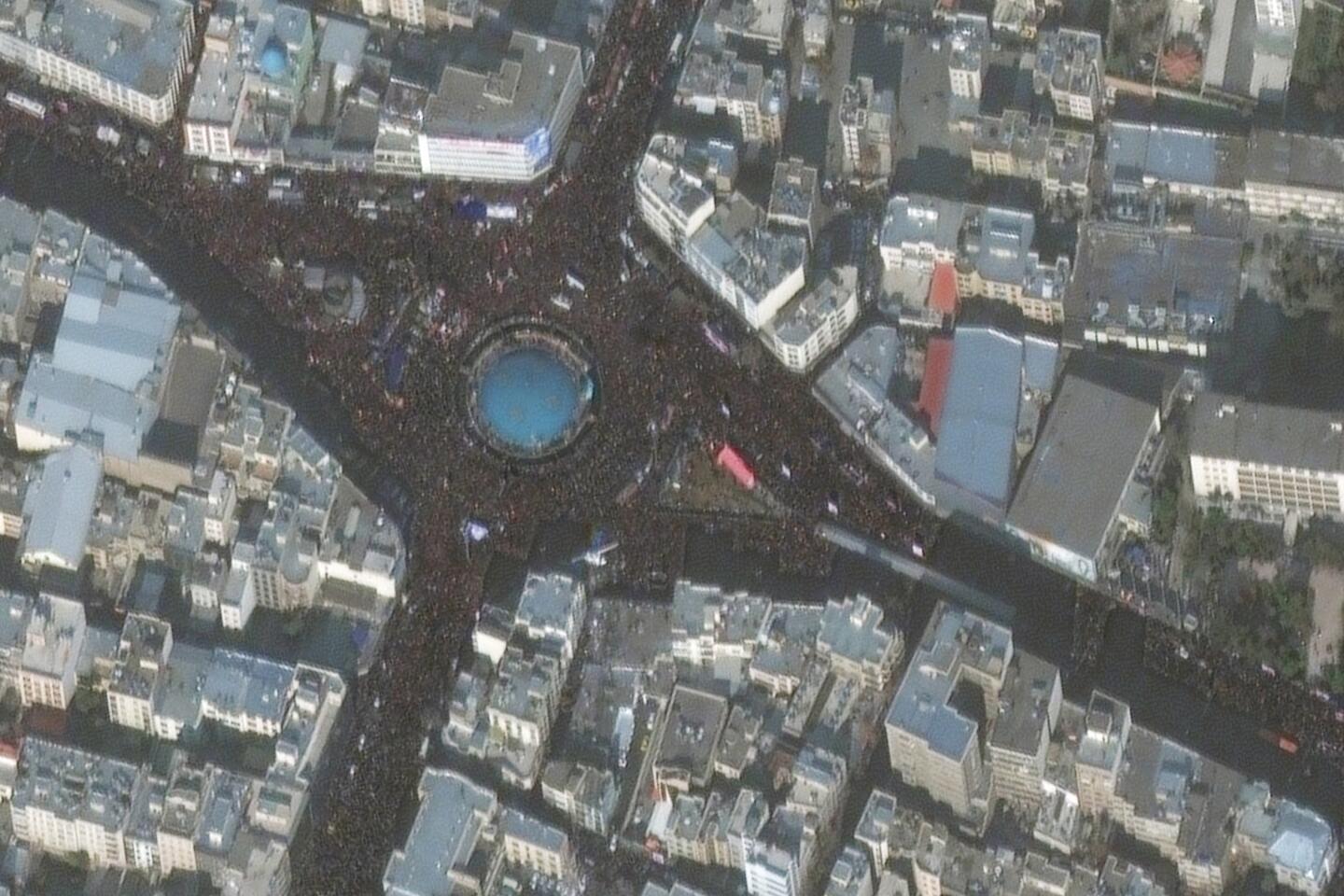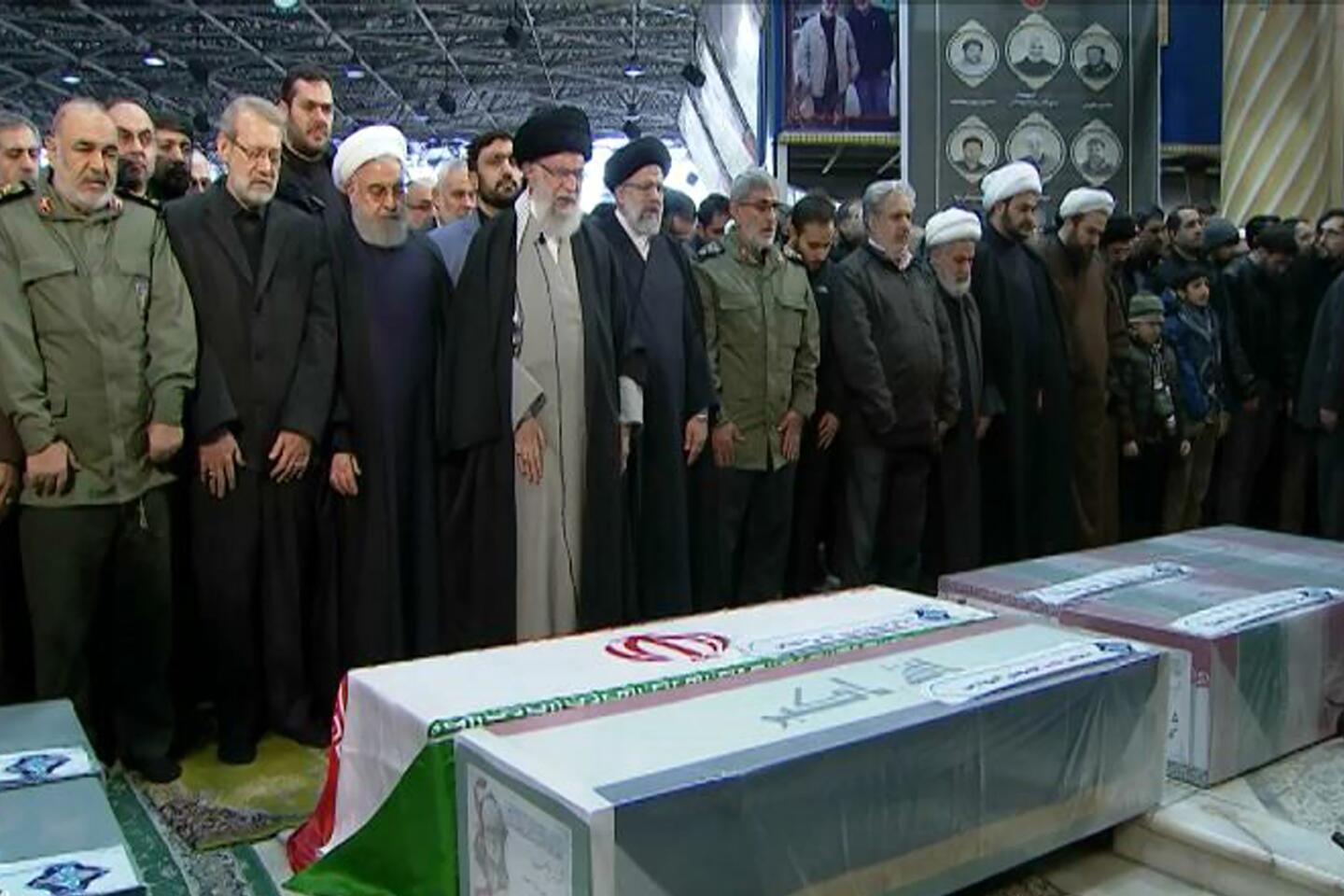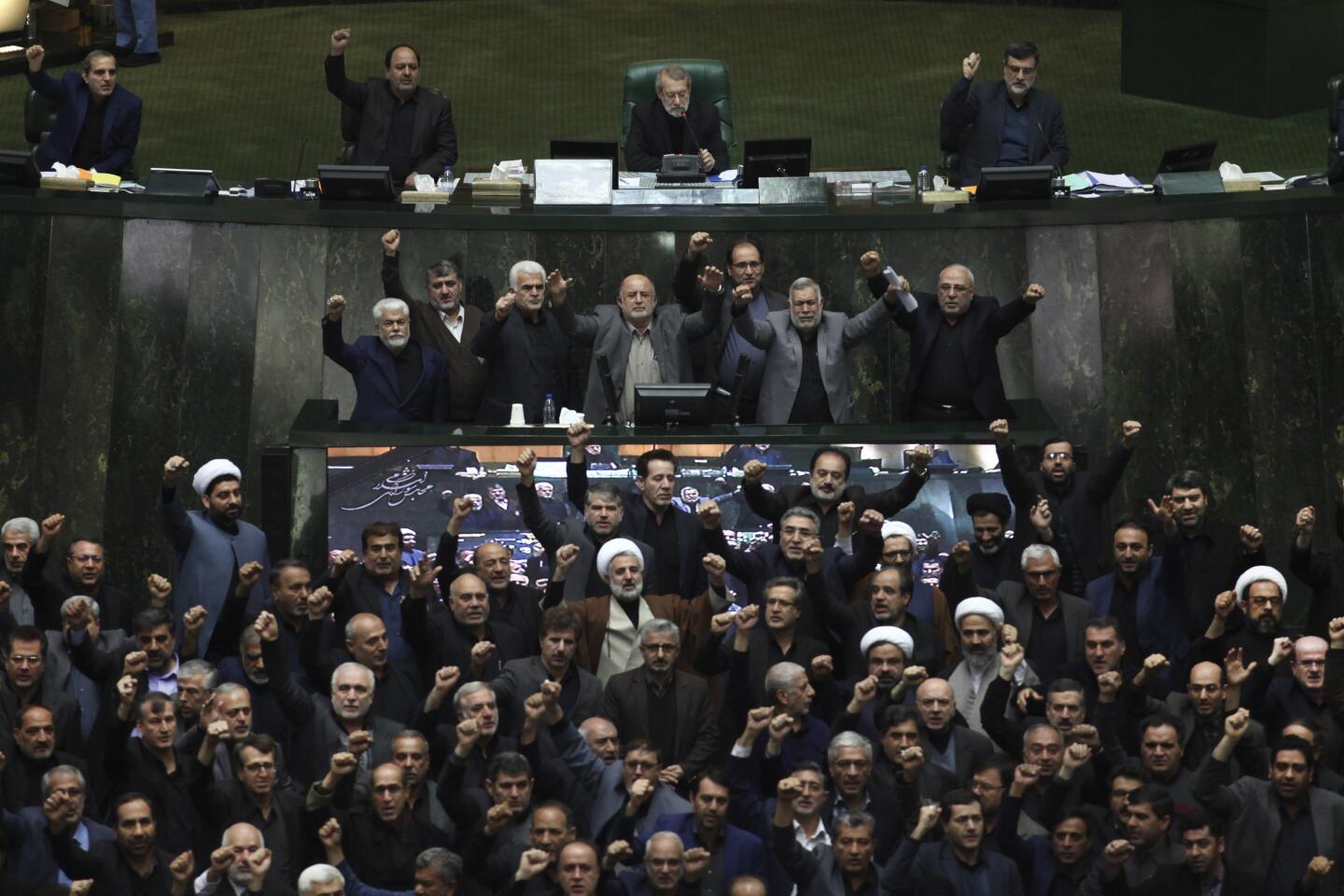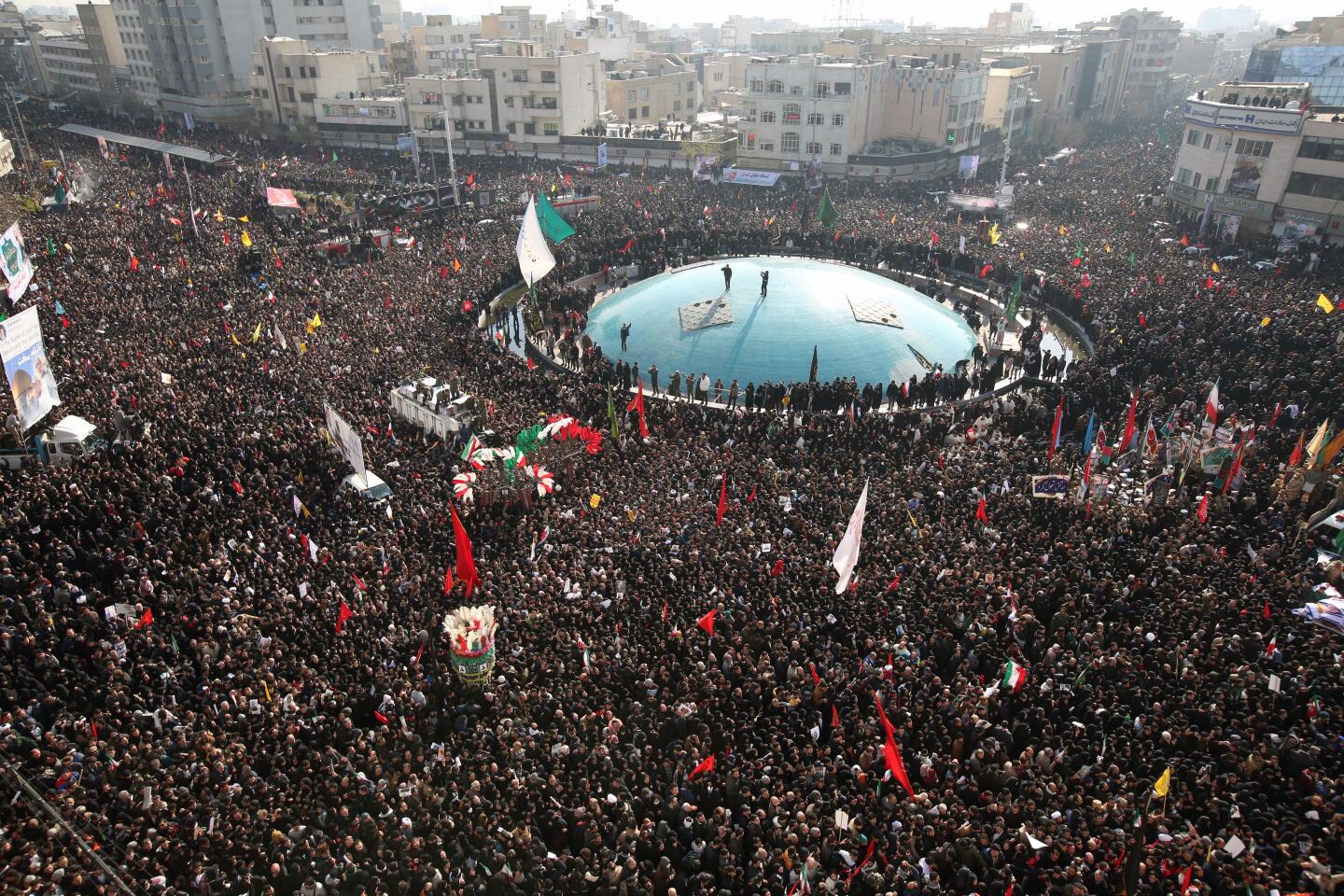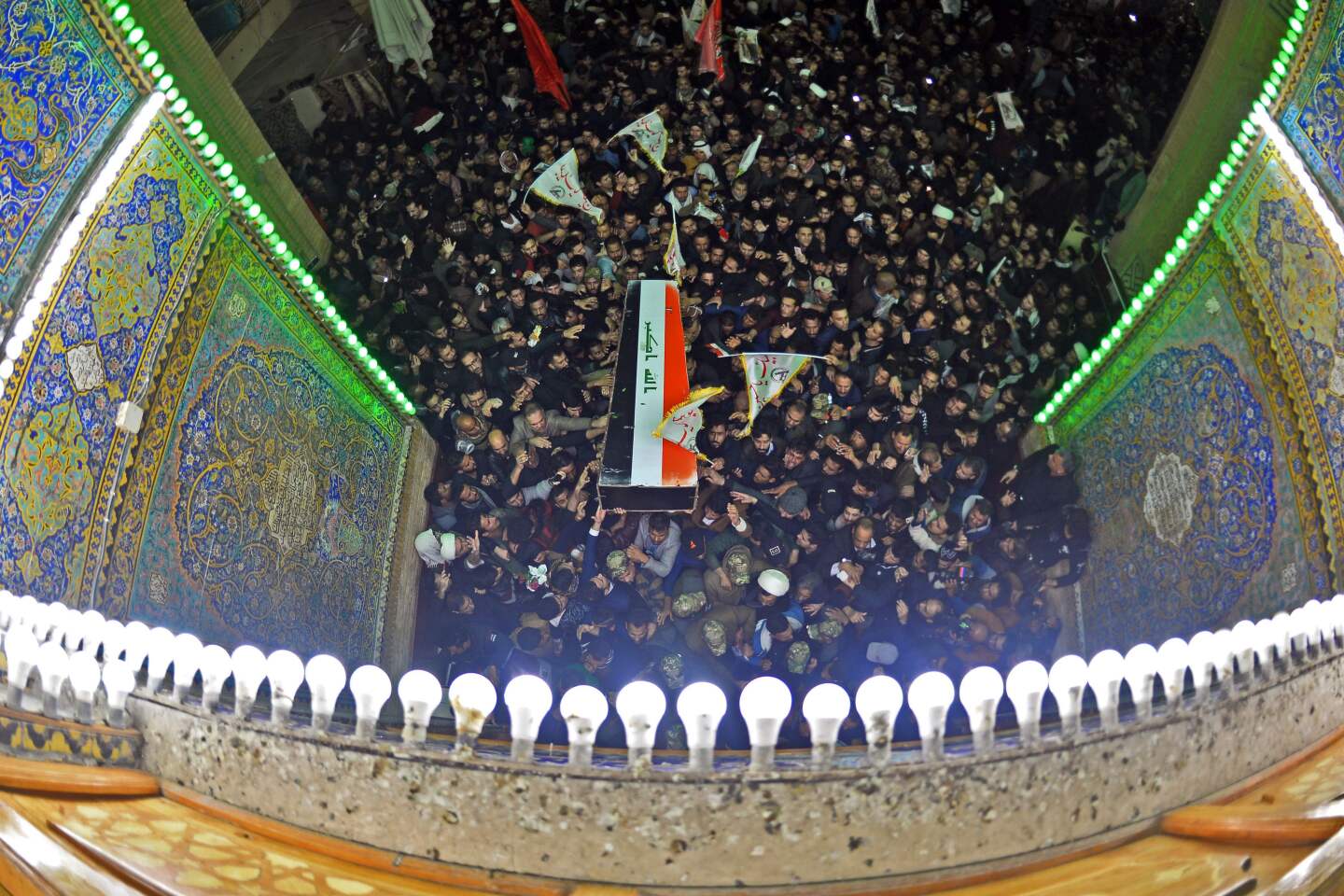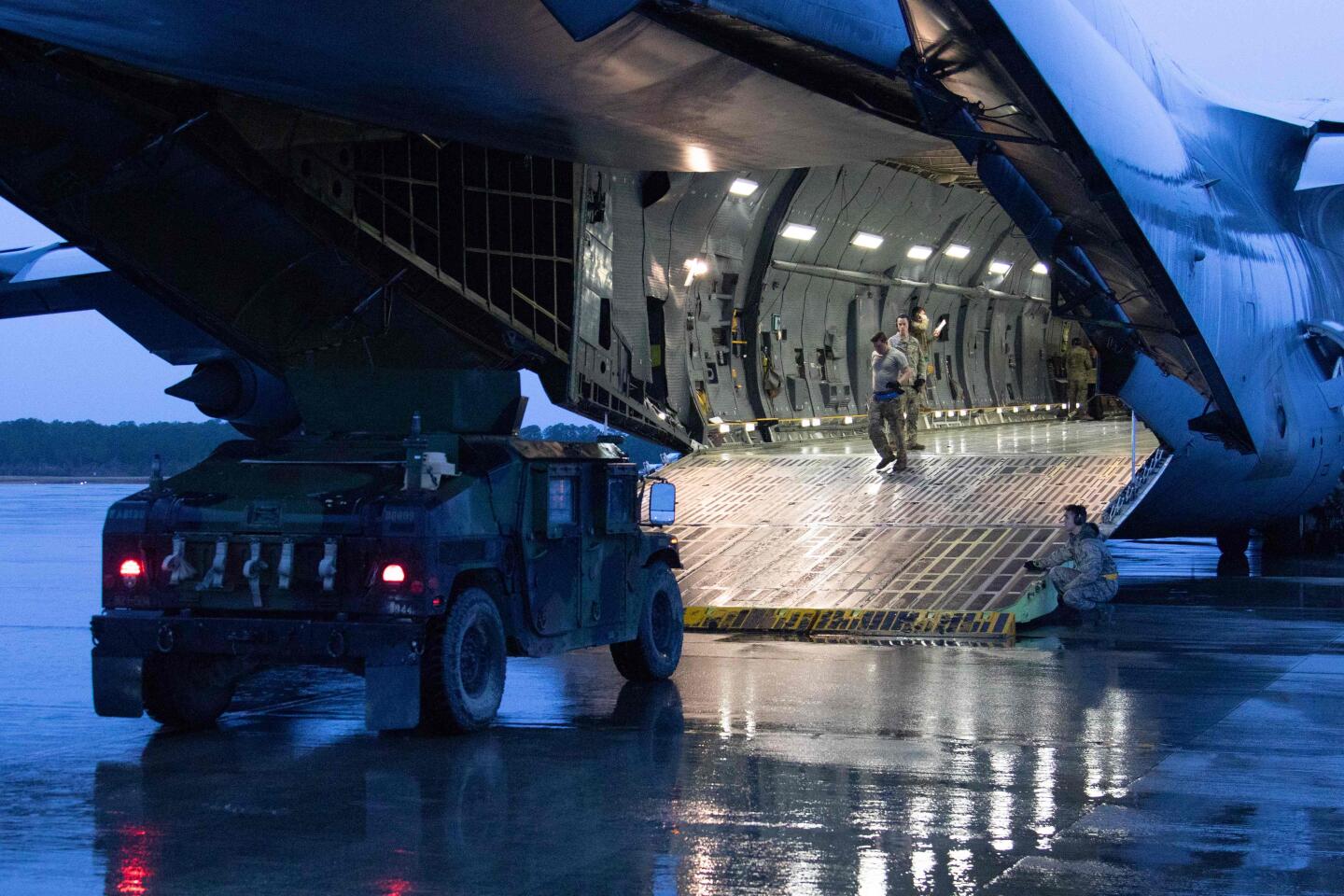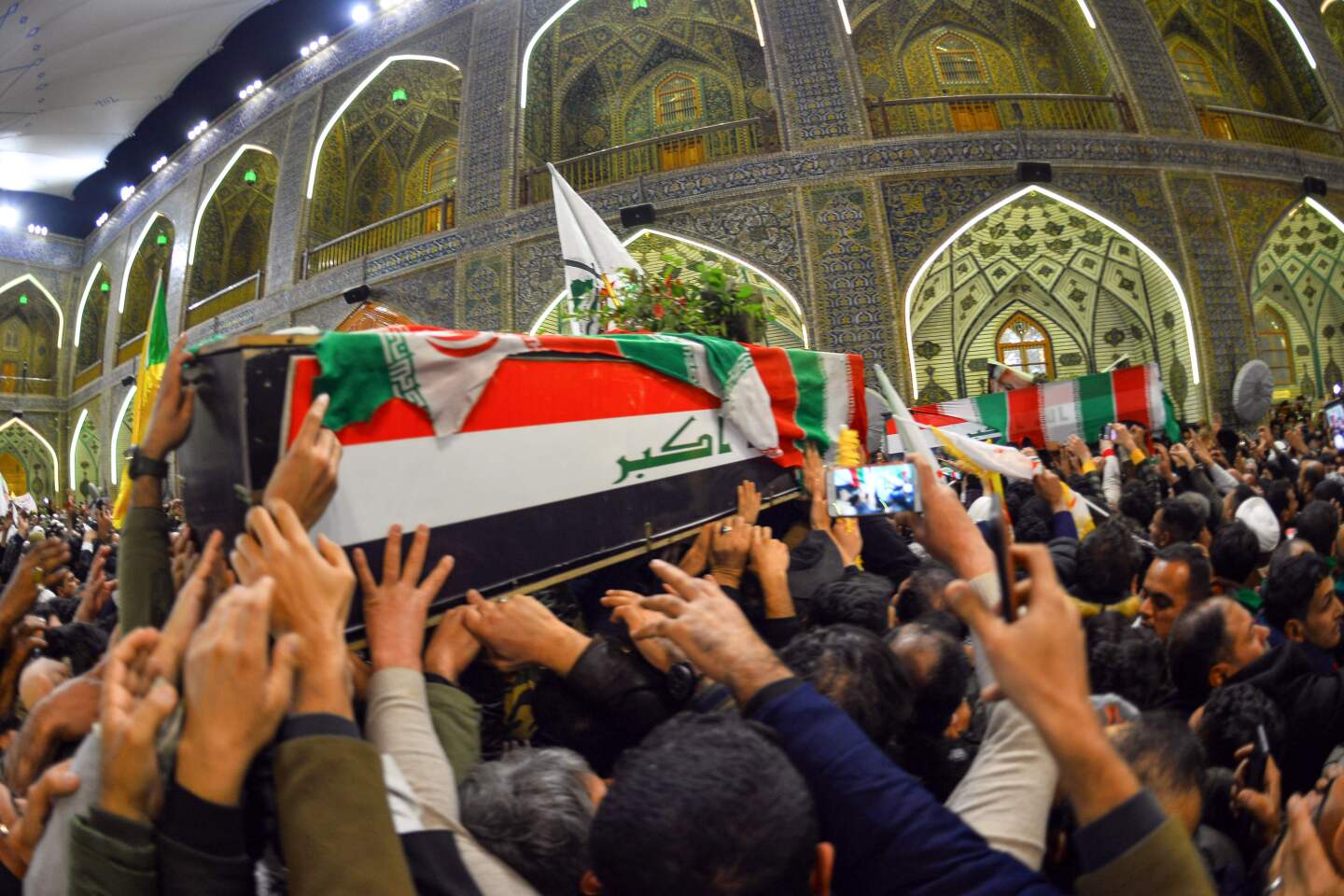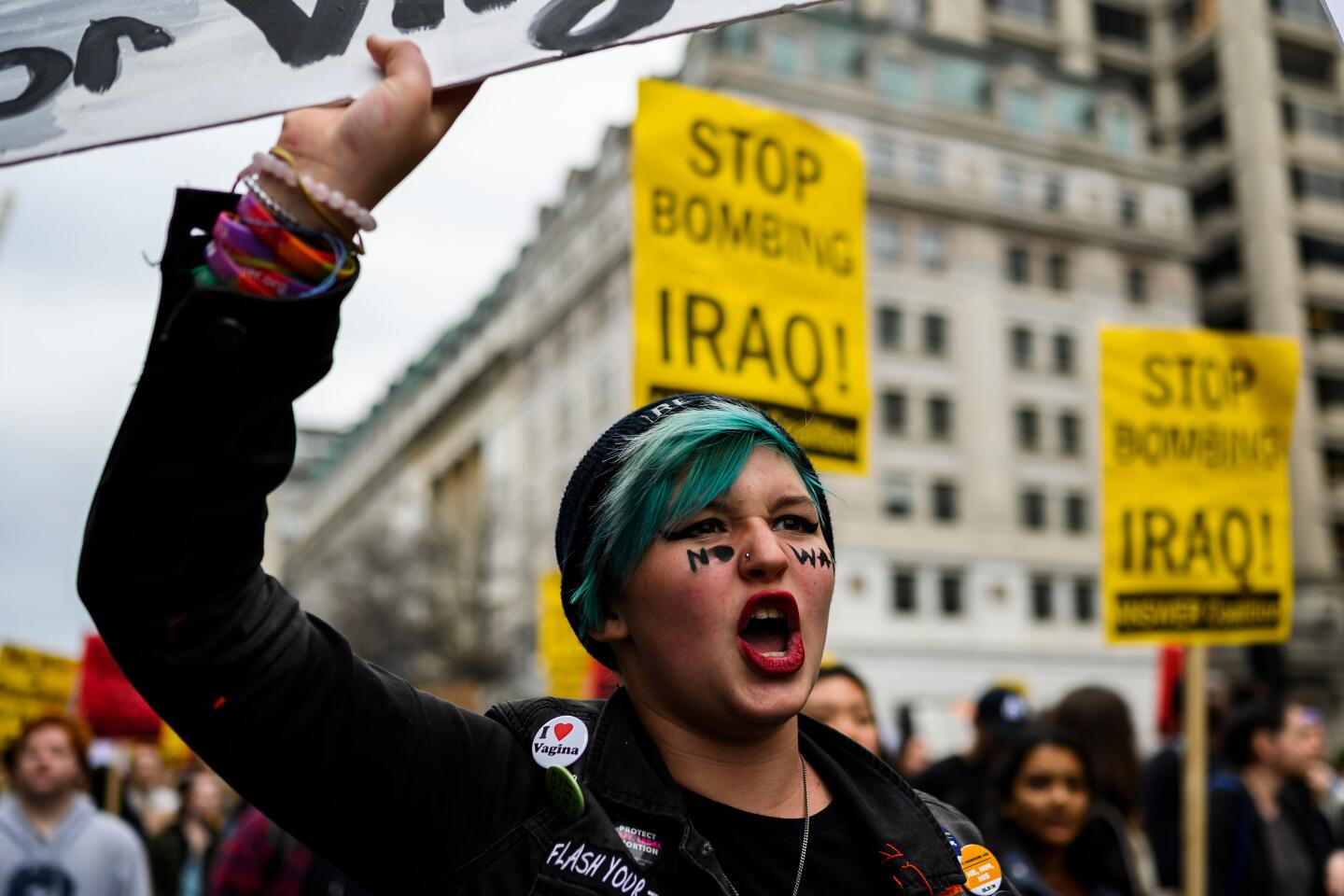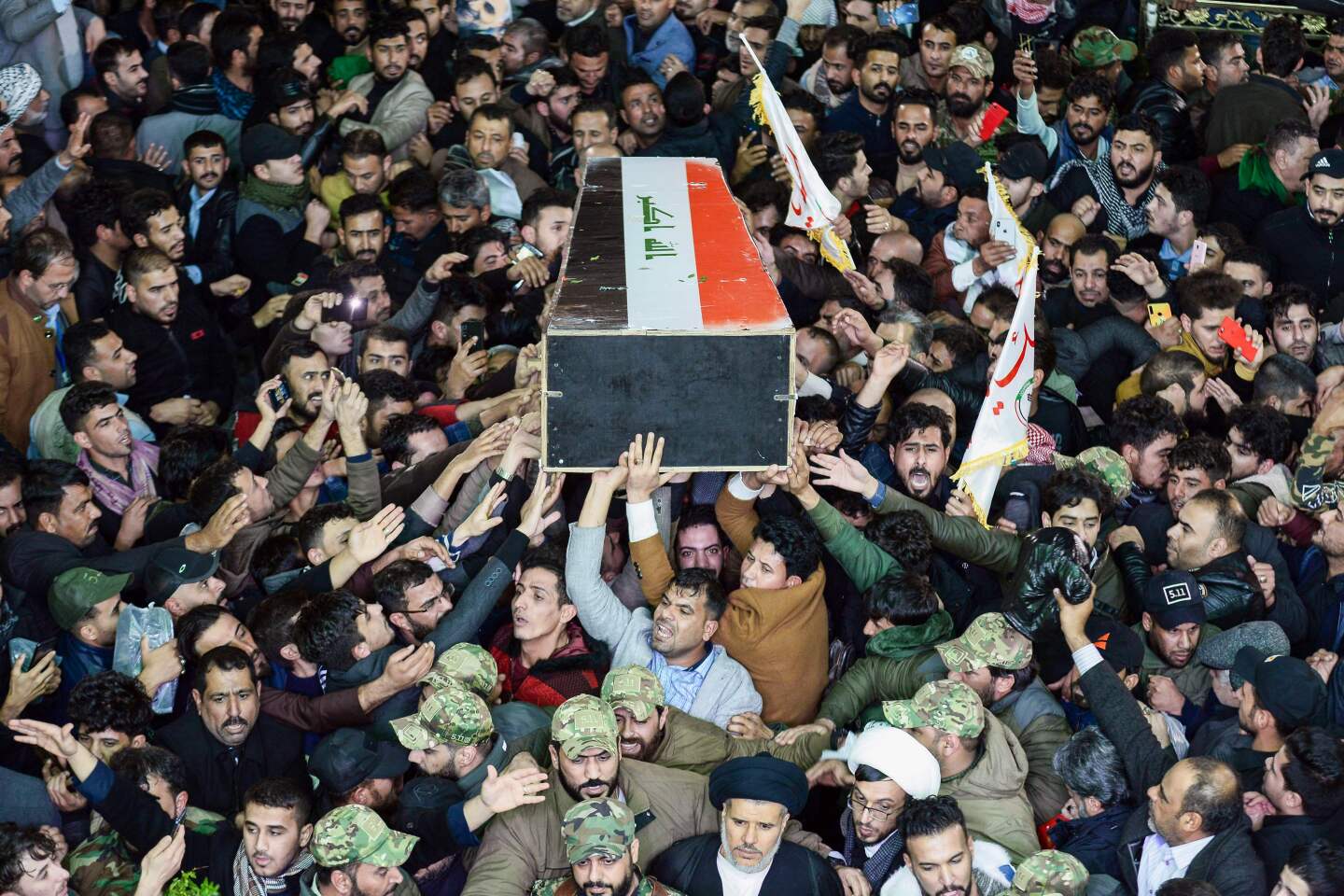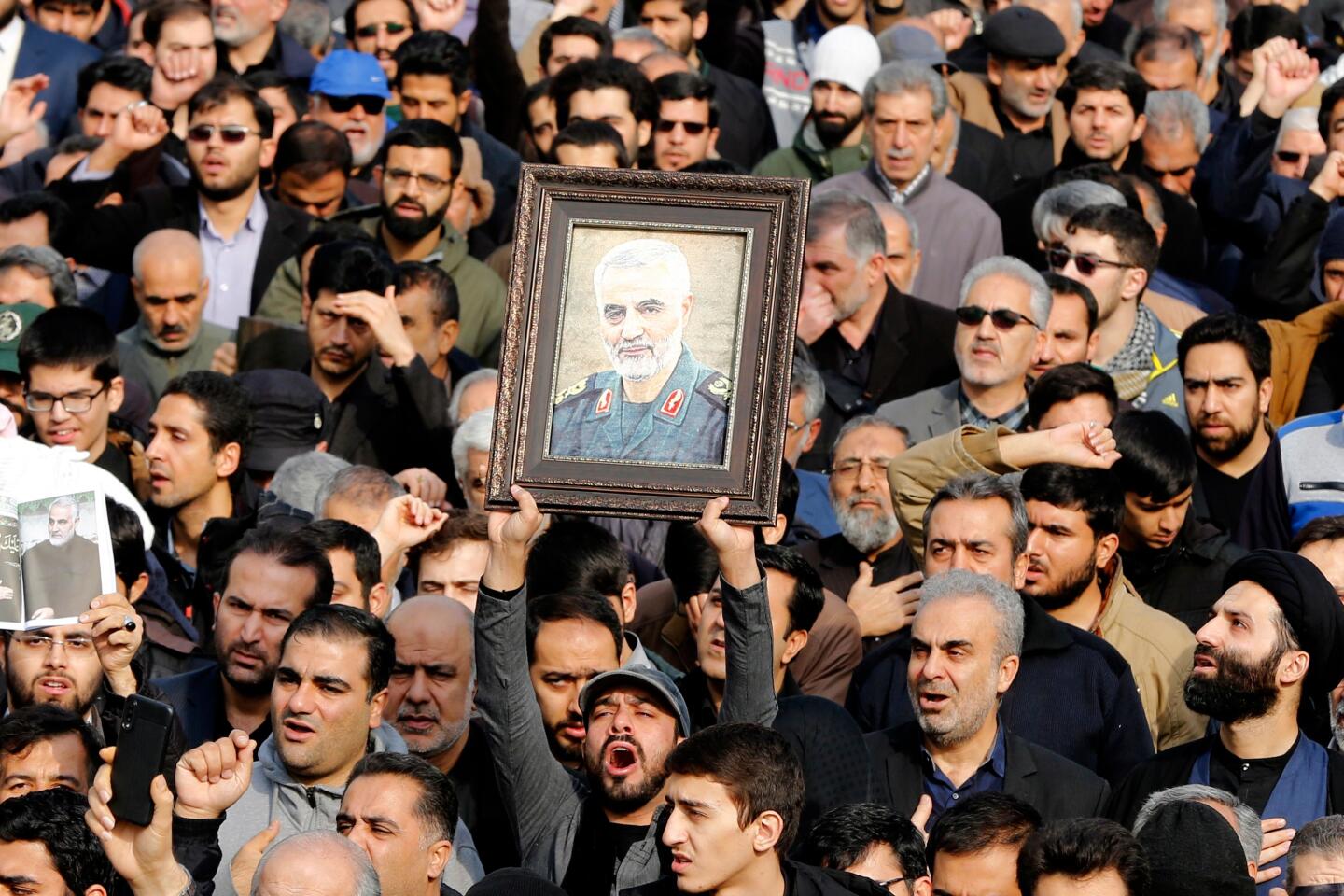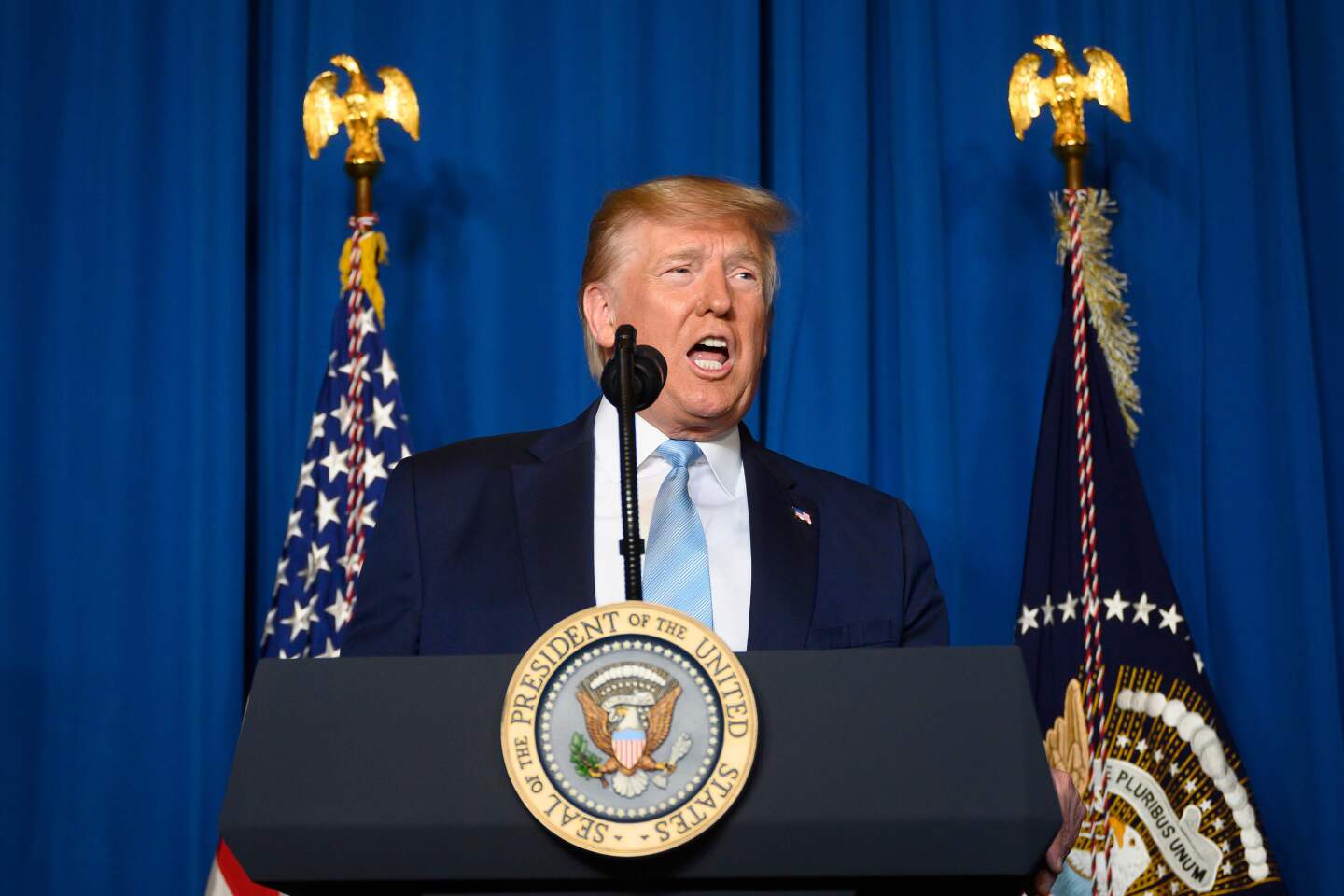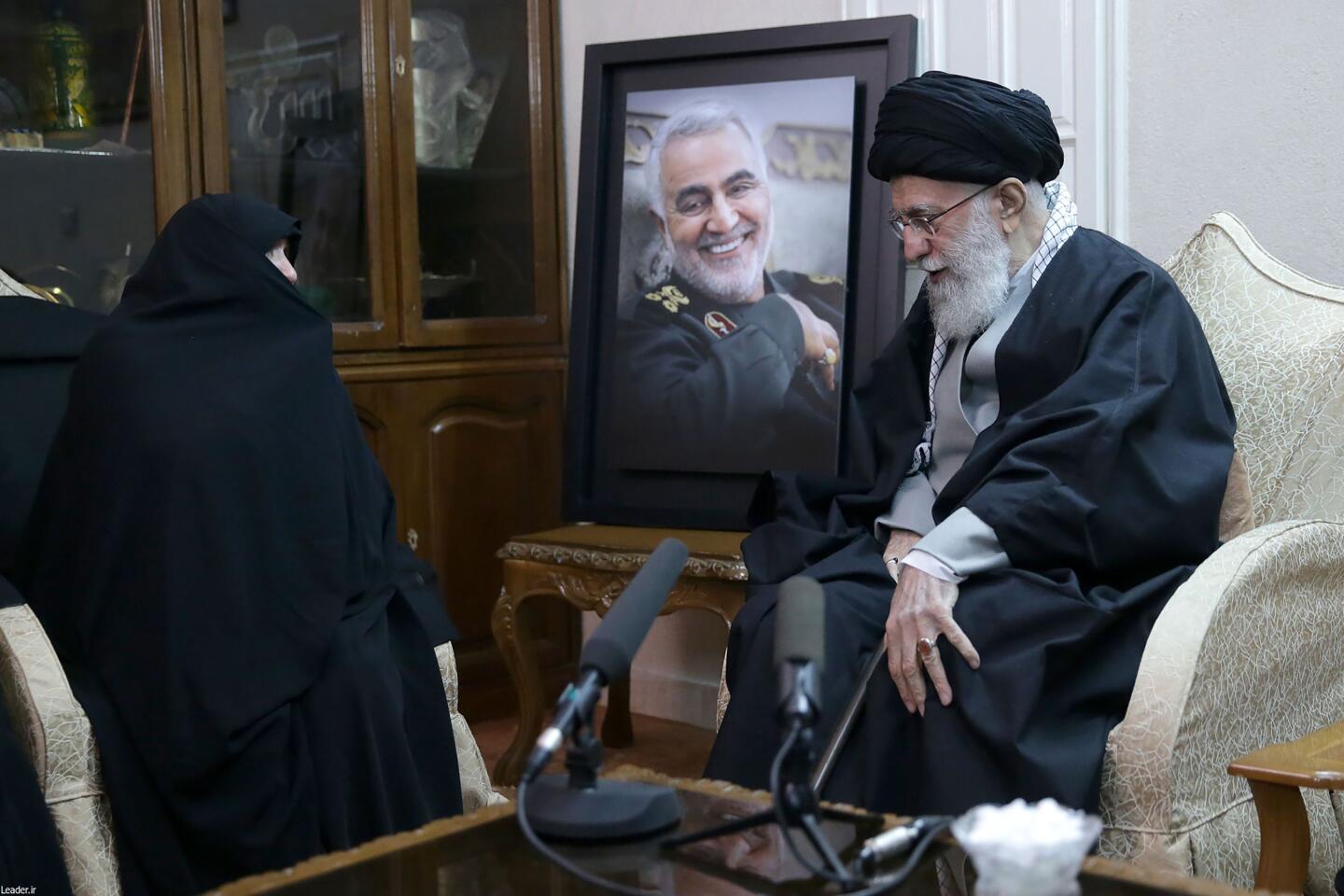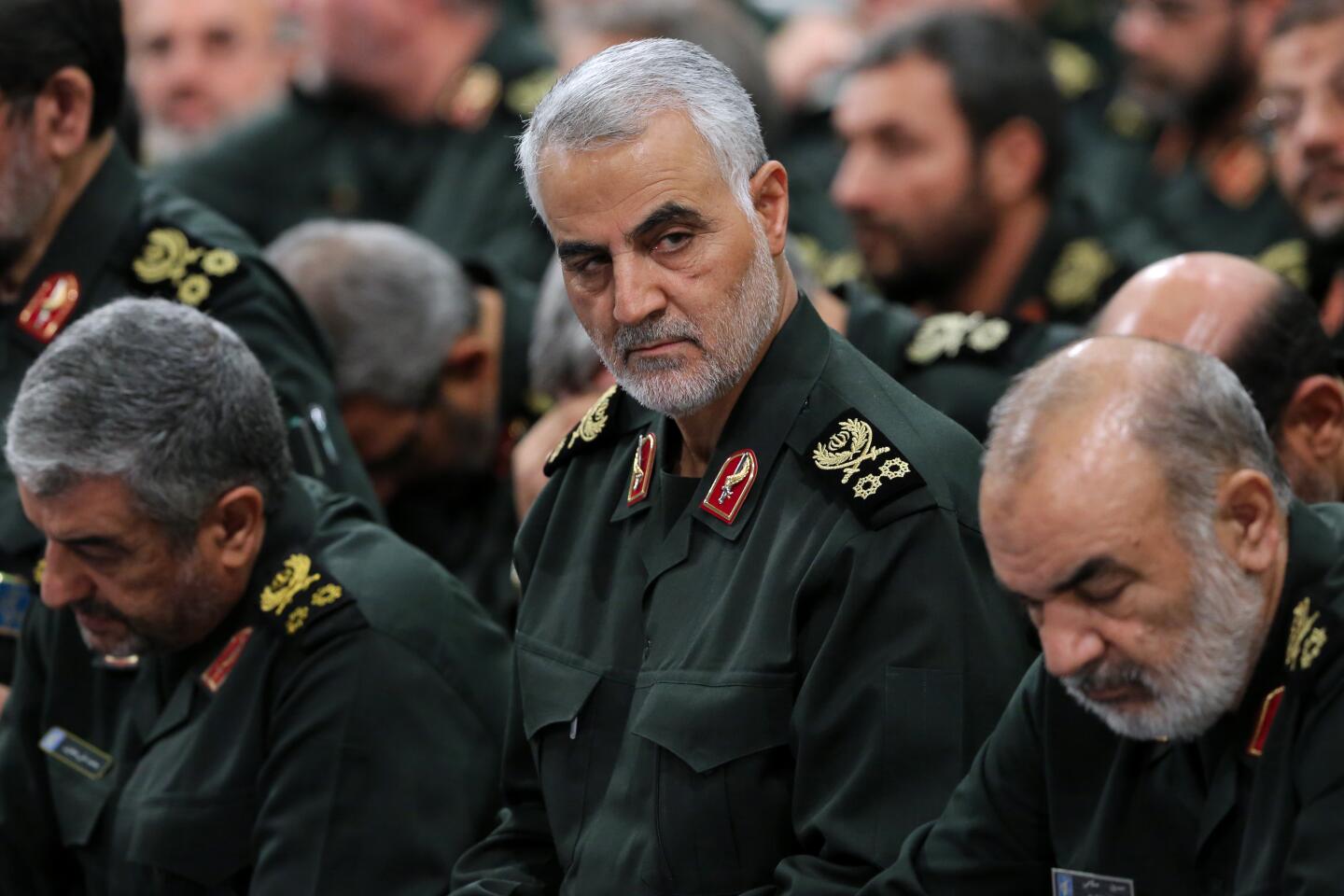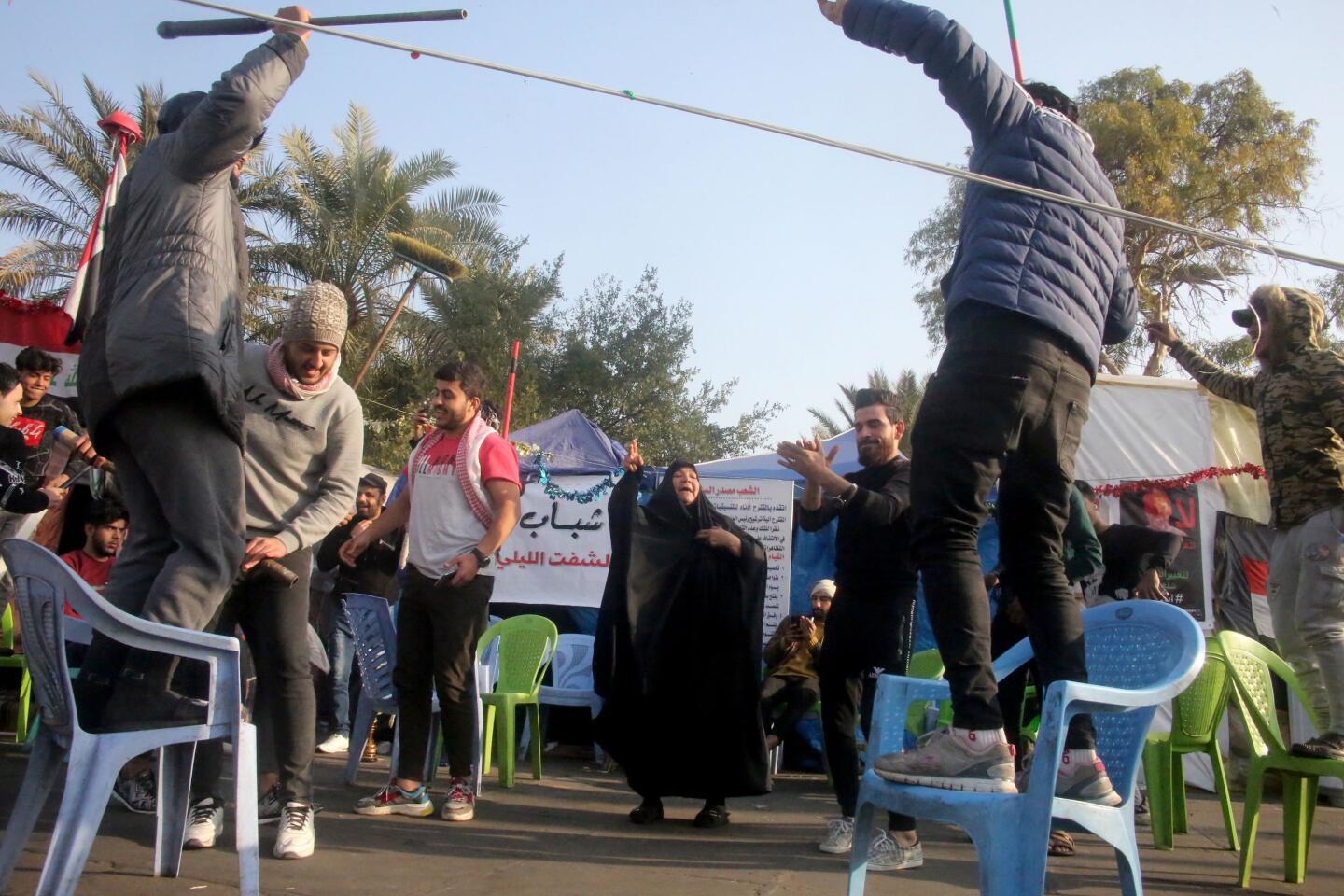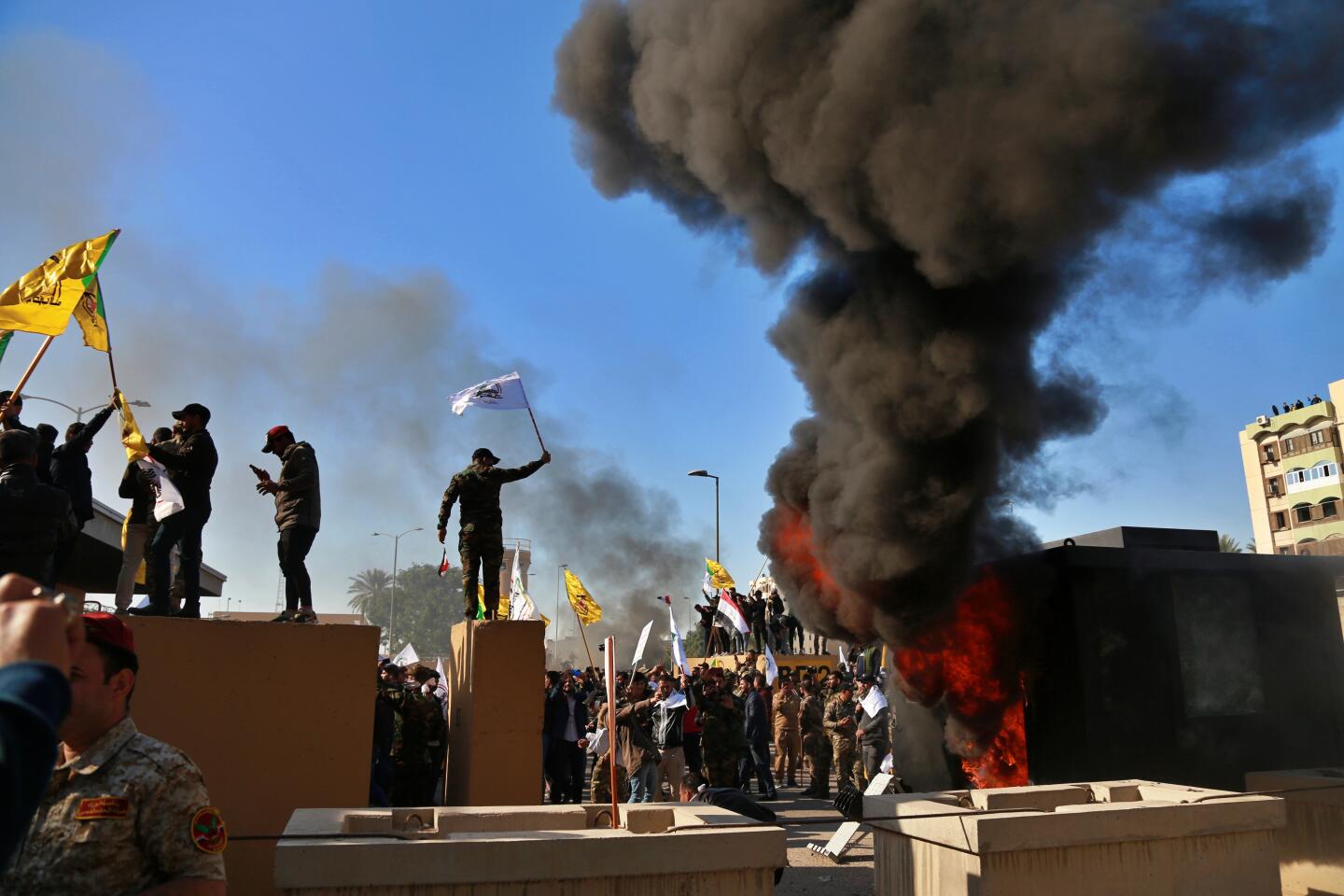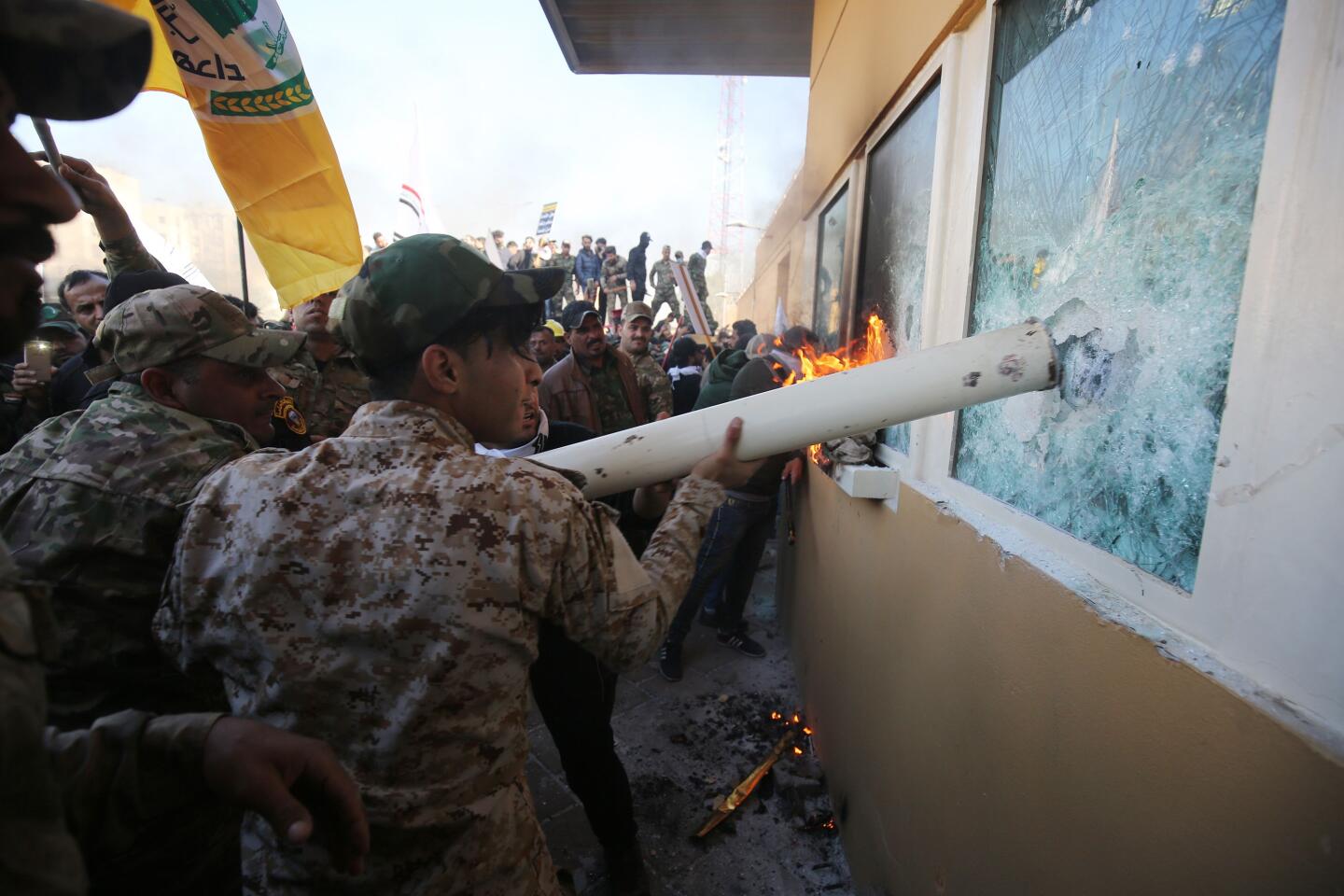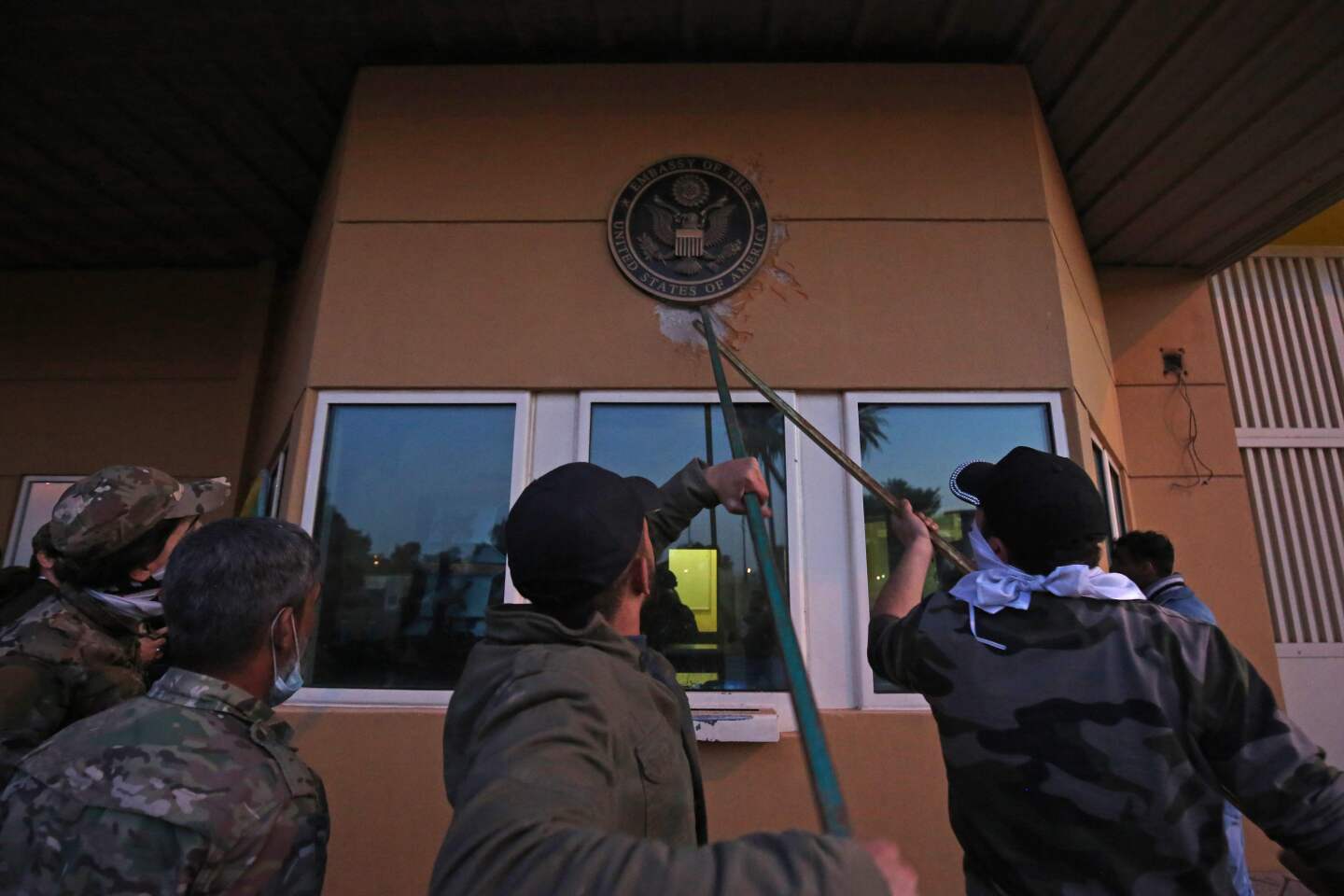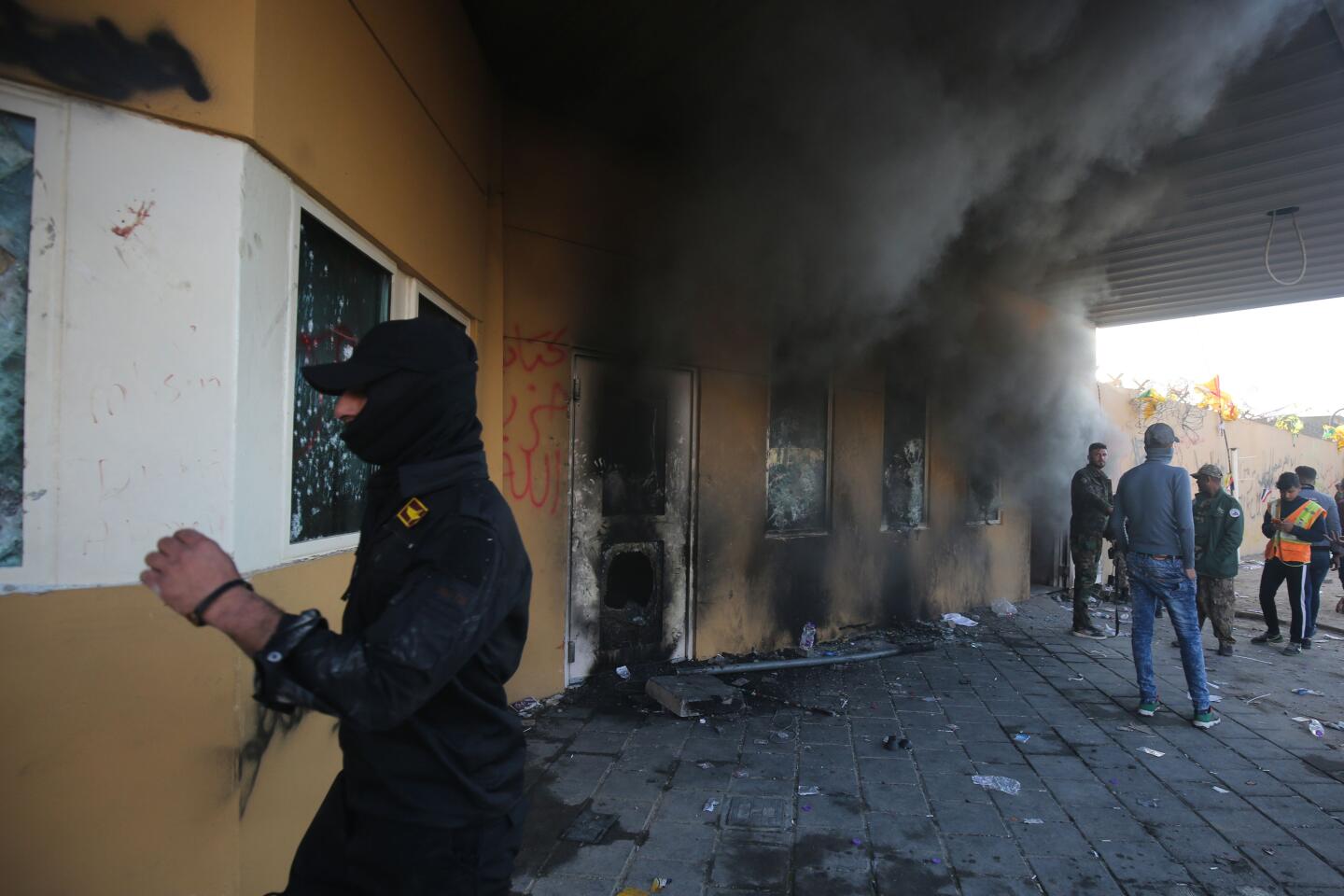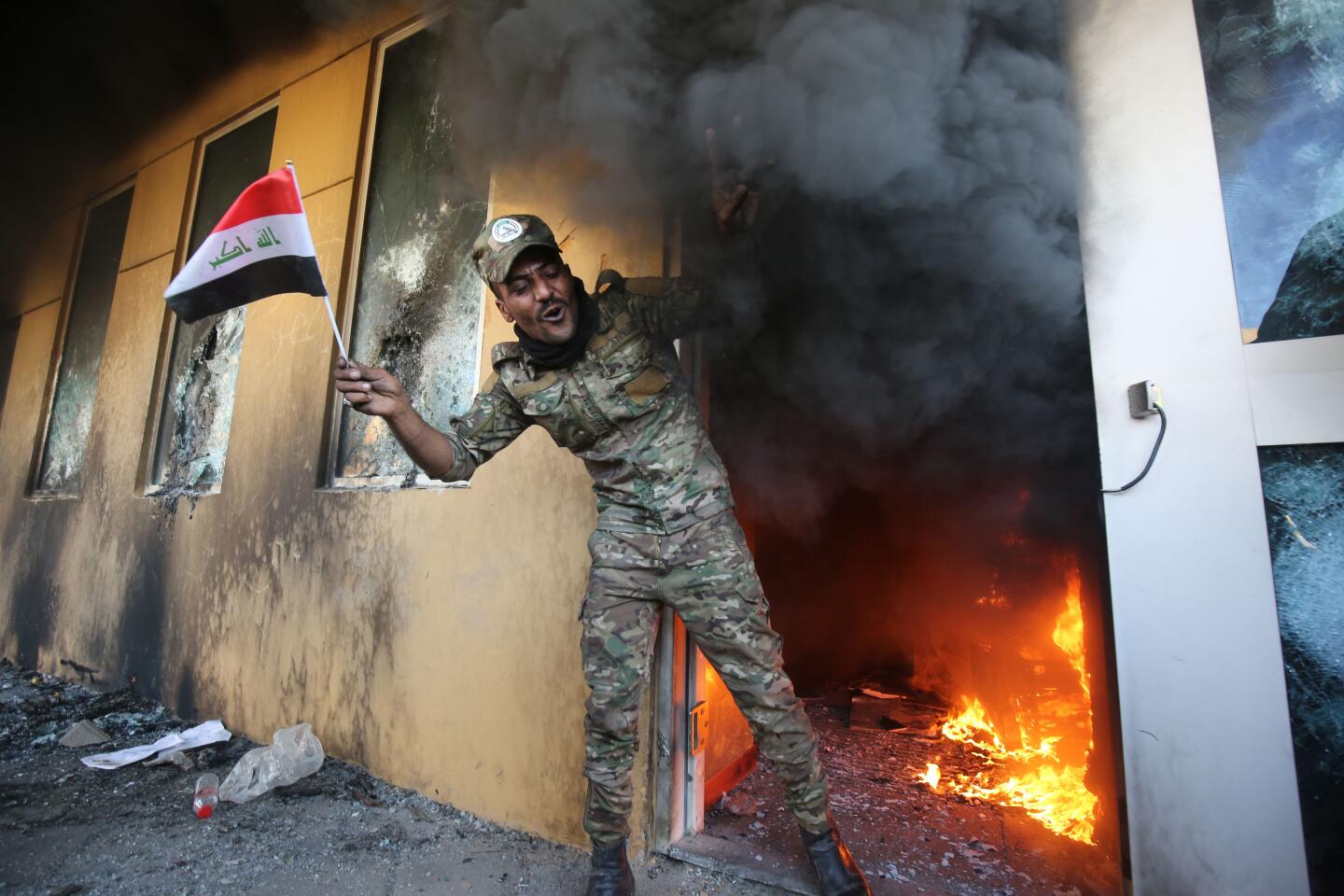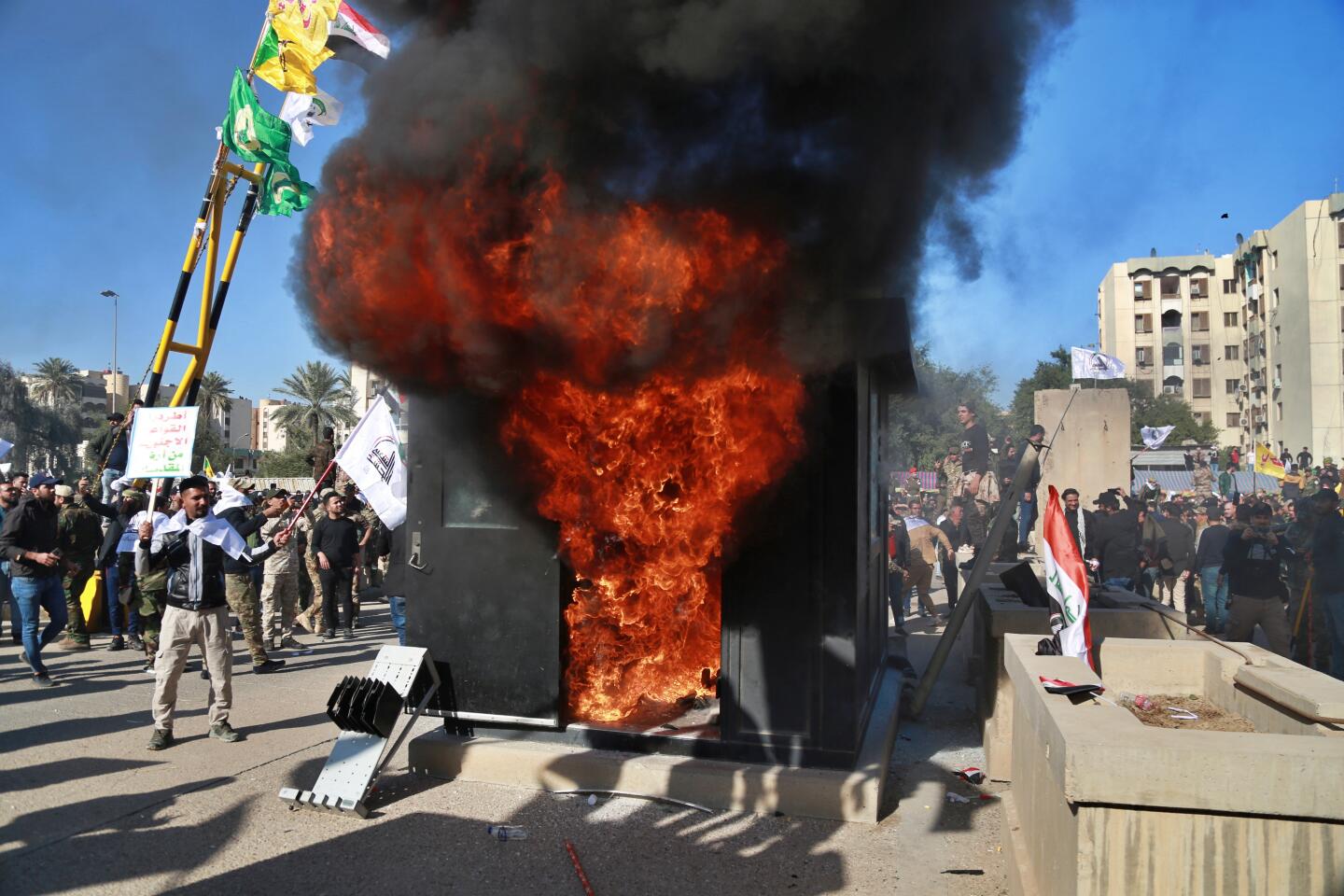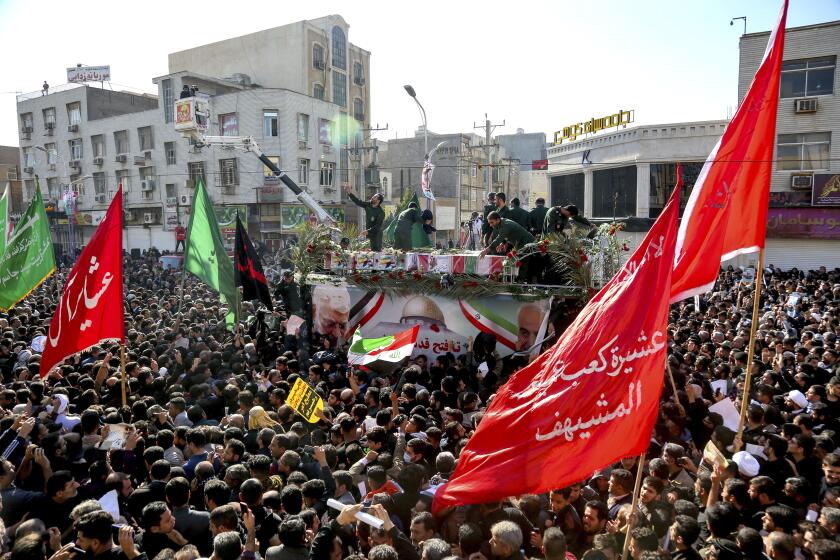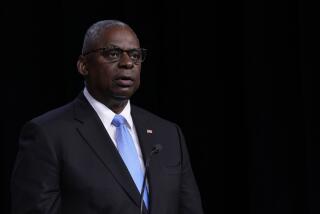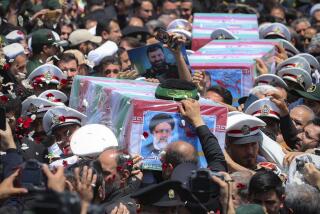Stampede kills dozens mourning Iranian general slain by U.S.
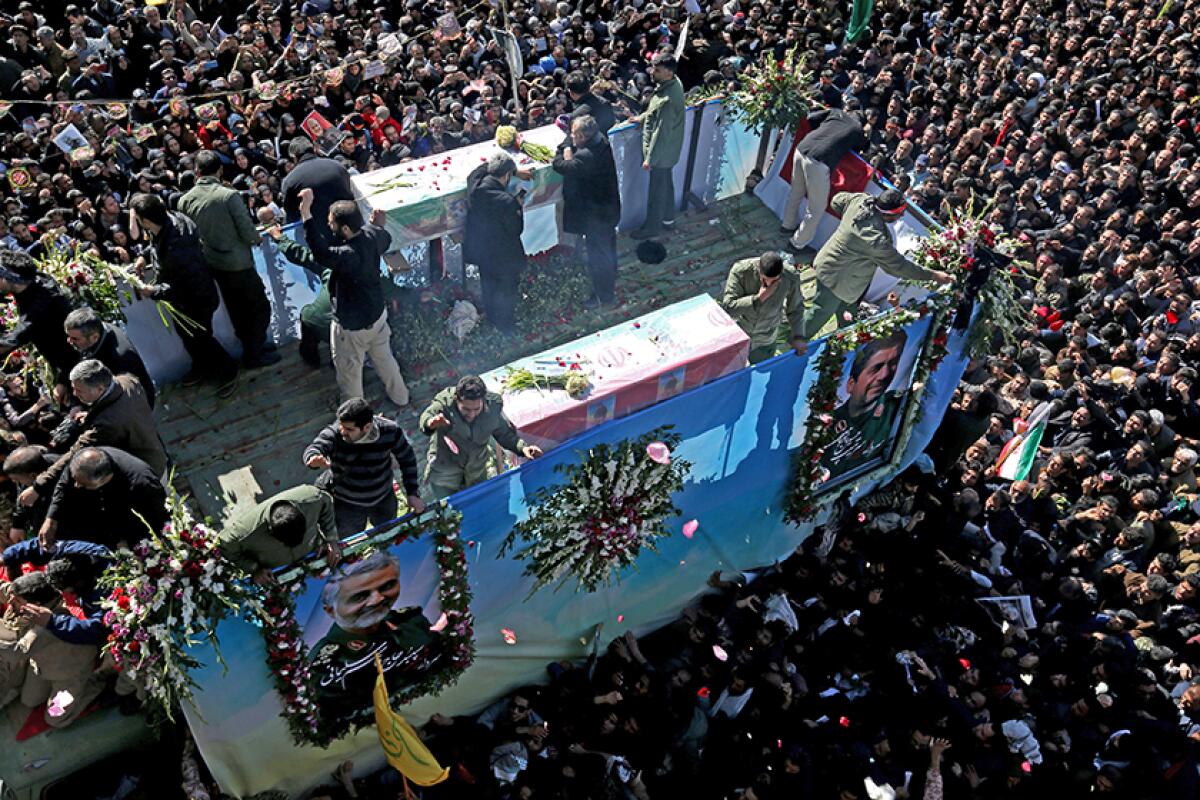
- Share via
TEHRAN — A stampede broke out Tuesday at the funeral for a top Iranian general slain in a U.S. airstrike, and at least 56 people were killed and more than 200 injured as thousands thronged the procession, Iranian news reports said.
The stampede took place in Kerman, the hometown of Revolutionary Guard Gen. Qassem Suleimani, as the procession began, said Pirhossein Koulivand, head of Iran’s emergency medical services.
There was no information about what set off the crush. Online videos showed people lying apparently lifeless, their faces covered by clothing. Emergency crews performed CPR on others as people wailed and cried out to God.
“Unfortunately, as a result of the stampede, some of our compatriots have been injured and some have been killed during the funeral processions,” Koulivand said.
State TV reported the death toll at 56, with 213 injured, citing Koulivand.
Suleimani’s burial was delayed, with no new time given, because of concerns about the massive crowd that had gathered, the semiofficial Iranian Students’ News Agency, or ISNA, said.
A procession in Tehran on Monday drew more than 1 million people, crowding both main avenues and side streets in the Iranian capital. Such massive crowds can prove dangerous. A smaller stampede at the 1989 funeral for Ayatollah Ruhollah Khomeini killed at least eight people and injured hundreds.
President Trump sends 2,500 more Marines to the Middle East, the latest fallout of his decision to kill a top Iranian official.
Suleimani’s death in a drone strike Friday has sparked calls across Iran for revenge against America, drastically raising tensions in the Middle East. The U.S. government warned ships of an unspecified threat from Iran across the region’s waterways, crucial routes for global energy supplies. Meanwhile, the U.S. Air Force launched a drill with 52 fighter jets in Utah, just days after President Trump threatened to hit 52 sites in Iran.
Earlier in the day, Hossein Salami, the new leader of Iran’s Revolutionary Guard, vowed to avenge Suleimani’s death as he addressed a crowd of supporters gathered at the coffin in a central square in Kerman.
“We tell our enemies that we will retaliate but if they take another action we will set ablaze the places that they like and are passionate about,” Salami said.
“Death to Israel!” the crowd shouted in response. Israel is a longtime regional foe of Iran.
The funeral processions in major cities over three days have been an unprecedented honor for Suleimani, viewed by Iranians as a national hero for his work leading the Revolutionary Guard’s expeditionary Quds Force.
The U.S. blames him for killing U.S. troops in Iraq and accused him of plotting new attacks just before he was killed in the drone strike near Baghdad’s airport. Suleimani also led forces supporting Syrian President Bashar Assad in that country’s civil war, and he also served as the point man for Iranian proxies in countries like Iraq, Lebanon and Yemen.
The U.S. is continuing to reinforce its own positions in the region, including repositioning some forces.
Suleimani’s slaying already has pushed Tehran to abandon the remaining limits of its 2015 nuclear deal with world powers as his successor and others vow to take revenge. In Iraq, pro-Iranian factions in parliament have pushed to oust American troops from Iraqi soil following Suleimani’s killing at the Baghdad airport.
In his eulogy to the crowd, Salami praised Suleimani’s work, describing him as essential to backing Palestinian groups, Yemen’s Houthi rebels and Shiite militias in Iraq and Syria. As a martyr, Suleimani represented an even greater threat to Iran’s enemies, Salami said.
According to a report on Tuesday by the semiofficial news agency Tasnim, Iran has worked up 13 sets of plans to avenge Suleimani’s death. The report quoted Ali Shamkhani, the secretary of Iran’s Supreme National Security Council, as saying that even the weakest among them would be a “historic nightmare” for the U.S. He declined to elaborate.
“If the U.S. troops do not leave our region voluntarily and upright, we will do something to carry their bodies horizontally out,” Shamkhani said.
The official Islamic Republic News Agency later published a statement from the Supreme National Security Council denying Shamkhani made the comment.
The U.S. Maritime Administration warned ships across the Mideast, citing the rising threats. “The Iranian response to this action, if any, is unknown, but there remains the possibility of Iranian action against U.S. maritime interests in the region,” it said.
Oil tankers were targeted in mine attacks last year that the U.S. blamed on Iran. Tehran denied responsibility, although it did seize oil tankers around the crucial Strait of Hormuz, the narrow mouth of the Persian Gulf through which 20% of the world’s crude oil travels.
The U.S. Navy’s Bahrain-based 5th Fleet said it would work with shippers in the region to minimize any possible threat.
The 5th Fleet “has and will continue to provide advice to merchant shipping as appropriate regarding recommended security precautions in light of the heightened tensions and threats in the region,” 5th Fleet spokesman Cmdr. Joshua Frey told the Associated Press.
Meanwhile, Iranian Gen. Alireza Tangsiri, the chief of the Revolutionary Guard’s navy, issued his own warning.
“Our message to the enemies is to leave the region,” Tangsiri said, according to ISNA. The Revolutionary Guard routinely has tense encounters with the U.S. Navy in the Persian Gulf.
Separately, Iran summoned the British ambassador over comments by Prime Minister Boris Johnson and the British defense minister about Suleimani’s killing, the semiofficial Mehr News Agency reported.
Iran’s parliament, meanwhile, has passed an urgent bill declaring the U.S. military’s command at the Pentagon and those acting on its behalf in Suleimani’s killing as “terrorists,” subject to Iranian sanctions. The measure appears to be an attempt to mirror a decision by Trump in April to declare the Revolutionary Guard a “terrorist organization.”
The U.S. Defense Department used the Revolutionary Guard’s terrorist designation to support the strike that killed Suleimani. The action by Iran’s parliament, expedited into law by way of a special procedure, comes as officials across the country threaten to retaliate for Suleimani’s killing.
The vote also saw lawmakers approve funding for the Quds Force, with the addition of about $224 million.
Also Tuesday, Iranian Foreign Minister Mohammad Javad Zarif said the U.S. had declined to issue him a visa to travel to New York for upcoming meetings at the United Nations. As the host of the U.N. headquarters, the U.S. is supposed to allow foreign officials to attend such meetings.
“This is because they fear someone will go there and tell the truth to the American people,” Zarif said. “But they are mistaken. The world is not limited to New York. You can speak with American people from Tehran too, and we will do that.”
Asked about Zarif, U.S. Secretary of State Michael R. Pompeo told journalists America would comply with its obligations under U.N. rules to grant visas. He then referred to the Iranian diplomat as “a propagandist of the first order.”
Suleimani will ultimately be laid to rest between the graves of Enayatollah Talebizadeh and Mohammad Hossein Yousef Elahi, two former Guard comrades killed in Iran’s 1980s war with Iraq. The two died in Operation Dawn 8, in which Suleimani also took part. The 1986 amphibious assault cut Iraq off from the Persian Gulf and led to the end of the bloody war that had killed 1 million people.
More to Read
Sign up for Essential California
The most important California stories and recommendations in your inbox every morning.
You may occasionally receive promotional content from the Los Angeles Times.
